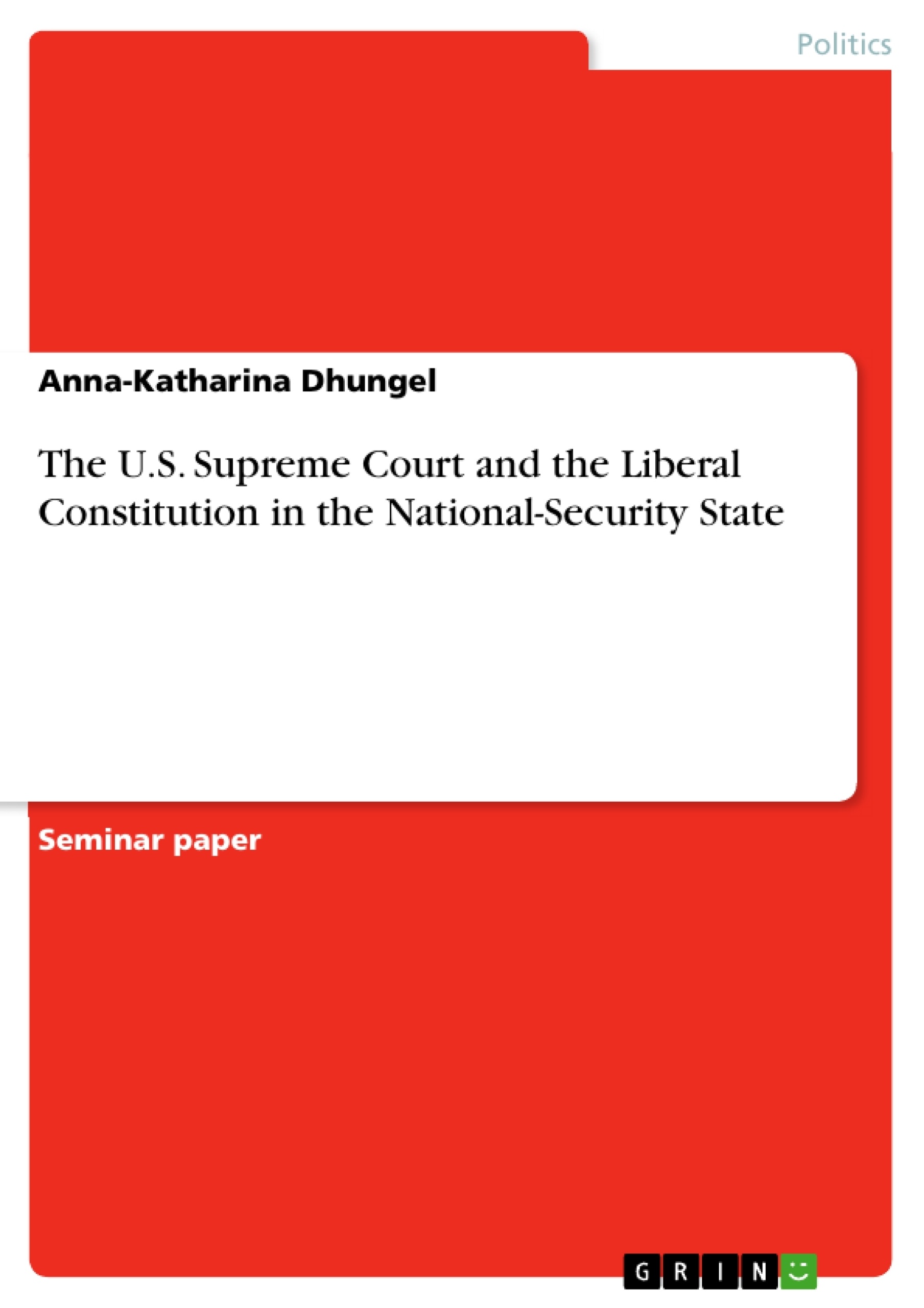The president of the United States is often mentioned in the media as the most powerful man in the world (Forbes 2012). But how far does his power reach in foreign affairs? Has he, as the commander in chief, the inherent power „to do anything, anywhere, that can be done with an army or navy“ (Youngstown Sheet & Tube Co. v. Sawyer, 1952: p. 642)? Can the Supreme Court control the president when he is acting with this executive powers and his authority as commander in chief? Did the president had the power to order the Korean War, the Vietnam War, the Congo rescue operation, the bay of pigs invasion, the intervention in the Dominican Republic or the engagement in the Cuban missile crisis without approval by Congress? Can the U.S. government detain foreign citizens indefinite at Guantanamo Bay and declare them as enemy combatants, without due process and suspend the writ of habeas corpus? Is the National Security Agency authorized to intercept international communication reputedly linked to al Qaeda or other terrorist organizations?
This paper argues that there is no well-recognized inherent power giving the president the possibility to act in foreign affairs without judicial control and congressional authorization, even though there is a long debate about this issue.
Inhaltsverzeichnis (Table of Contents)
- Introduction
- The Power of Foreign Affairs
- The Original Intent of Foreign Affairs
- Problems
- The Shifting of the Foreign Affairs Powers
- United States v. Curtiss-Wright Export Corp. (1936)
- Youngstown Sheet & Tube Co. v. Sawyer (1952)
- Foreign Affairs Powers Today
- Rasul v. Bush (2004)
- Hamdan v. Rumsfeld (2006)
- Discussion
- Sources
Zielsetzung und Themenschwerpunkte (Objectives and Key Themes)
This paper explores the extent of the President's power in foreign affairs, focusing specifically on the Supreme Court's role in controlling the President's executive and military powers. It investigates whether the President, as Commander-in-Chief, possesses inherent authority to act without congressional authorization or judicial oversight in matters of foreign affairs.
- The original intent of the Founding Fathers regarding the distribution of foreign affairs power.
- The evolution of Supreme Court rulings on presidential power in foreign affairs, including landmark cases like United States v. Curtiss-Wright Export Corp. and Youngstown Sheet & Tube Co. v. Sawyer.
- The contemporary application of presidential power in foreign affairs, specifically in the context of the "war on terror," with a focus on cases like Rasul v. Bush and Hamdan v. Rumsfeld.
- The debate surrounding the advantages and disadvantages of a powerful president in foreign policy.
- The role of judicial control and congressional authorization in limiting presidential power in foreign affairs.
Zusammenfassung der Kapitel (Chapter Summaries)
The first chapter delves into the Founding Fathers' intentions regarding the division of powers in foreign affairs, emphasizing their skepticism of executive power and their desire for congressional control over initiating war. The second chapter examines two prominent Supreme Court cases that highlight the fluctuating interpretation of presidential power in foreign affairs. United States v. Curtiss-Wright Export Corp. (1936) and Youngstown Sheet & Tube Co. v. Sawyer (1952) exemplify the Court's shifting stance on the President's inherent authority.
Schlüsselwörter (Keywords)
The main keywords and focus topics include: presidential power in foreign affairs, original intent, judicial control, congressional authorization, Supreme Court rulings, war on terror, Guantanamo Bay, enemy combatants, military commissions, international law of war, inherent power, and the balance of powers.
- Quote paper
- Anna-Katharina Dhungel (Author), 2012, The U.S. Supreme Court and the Liberal Constitution in the National-Security State, Munich, GRIN Verlag, https://www.grin.com/document/202905



